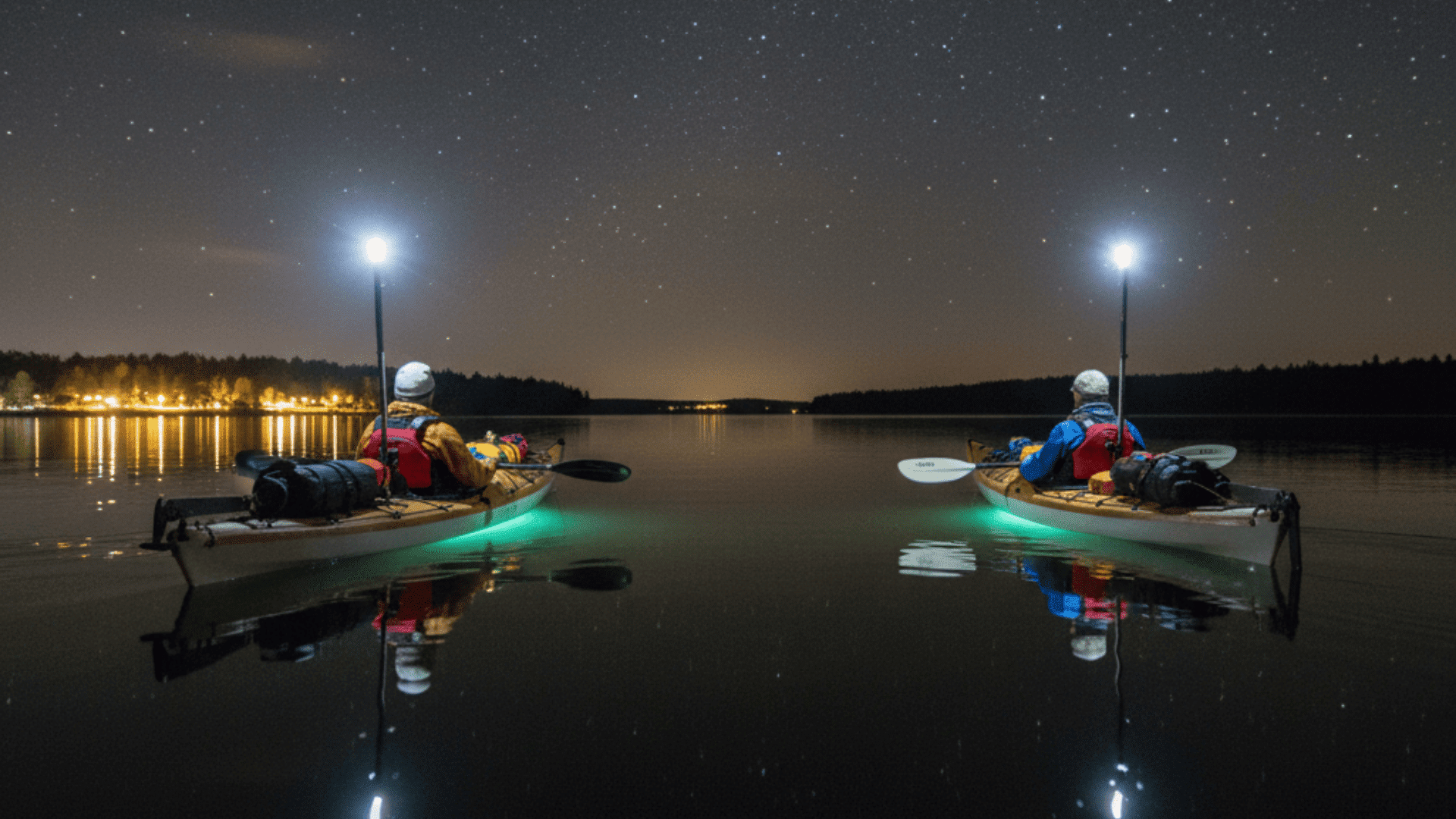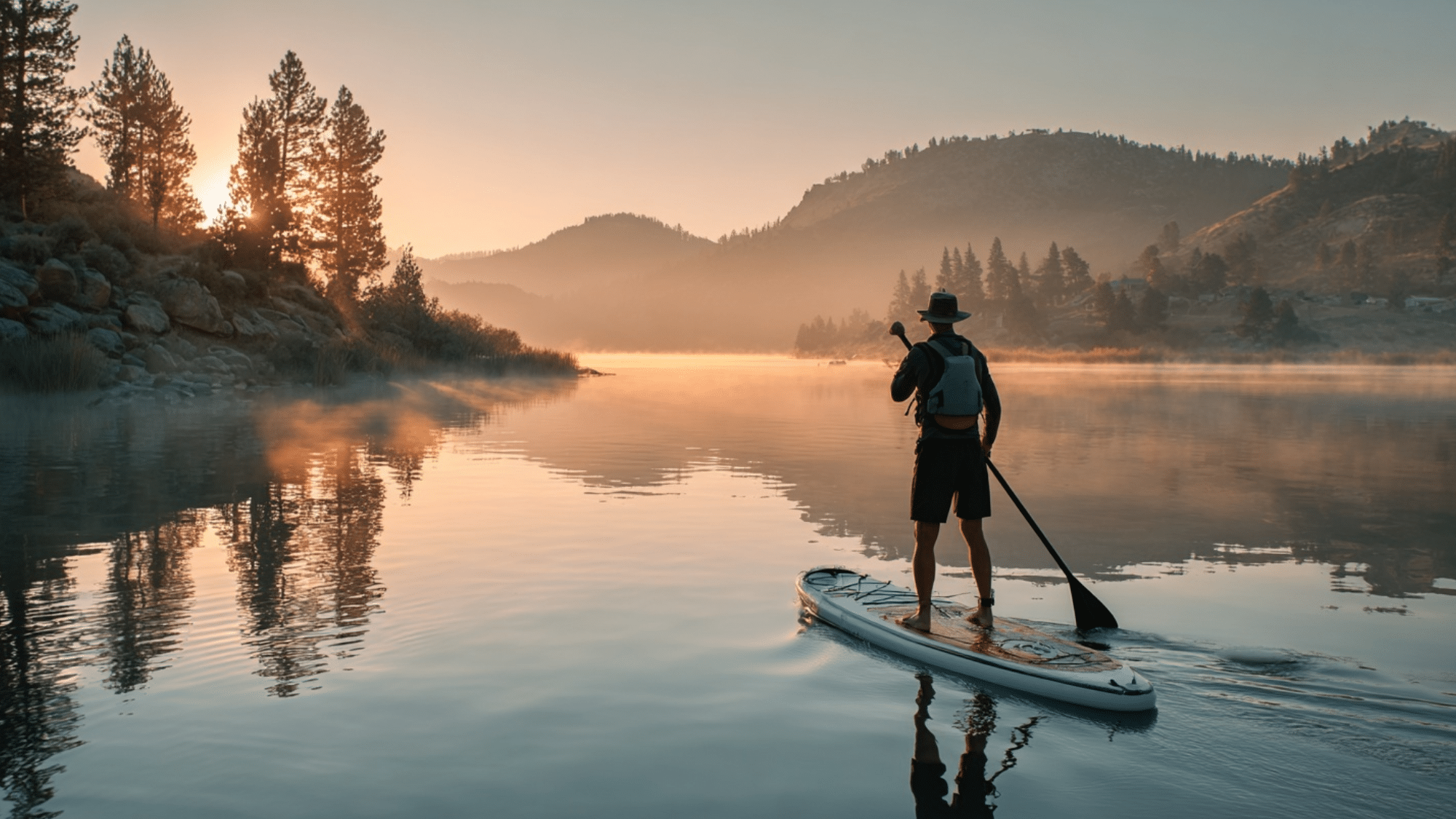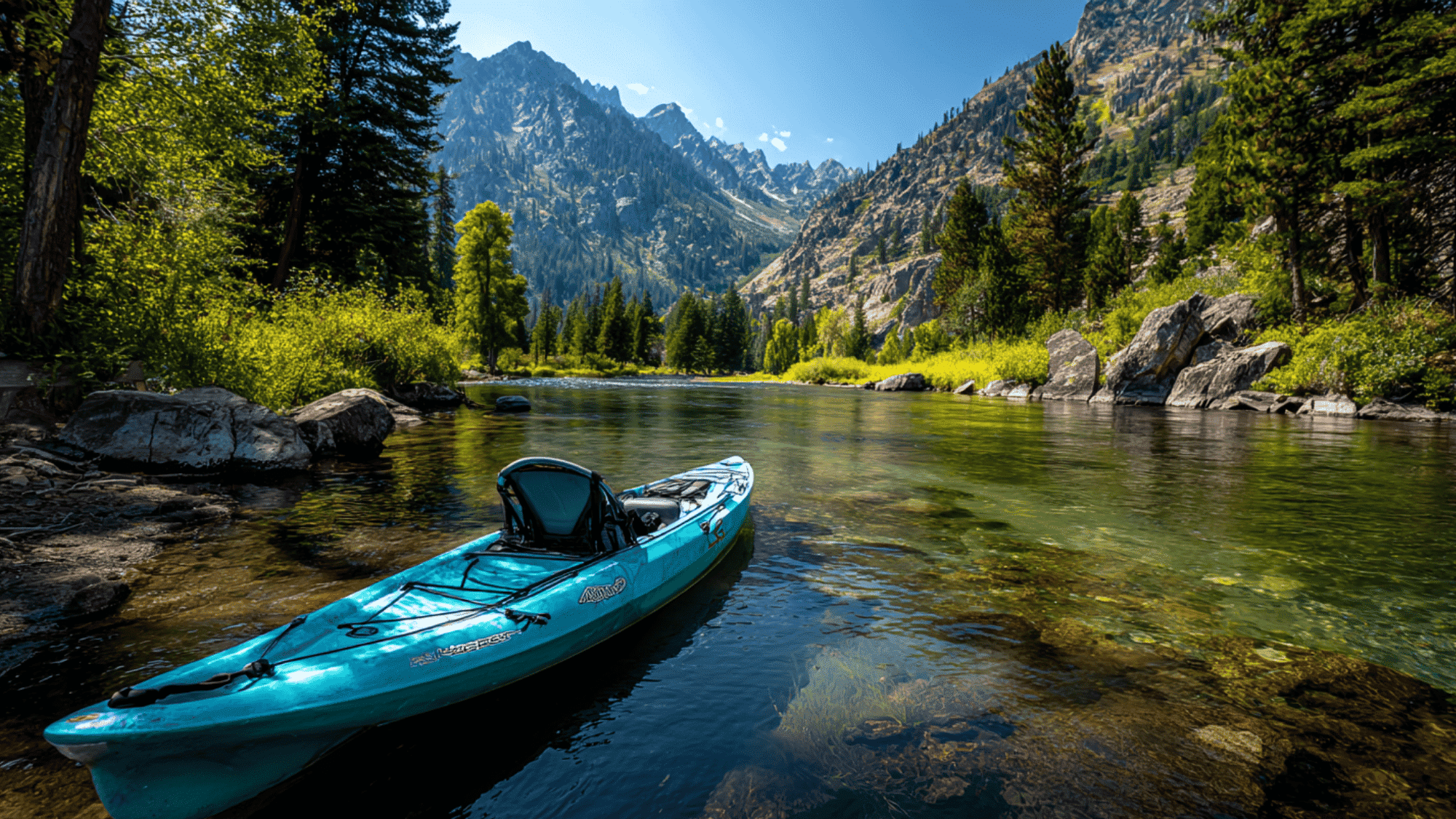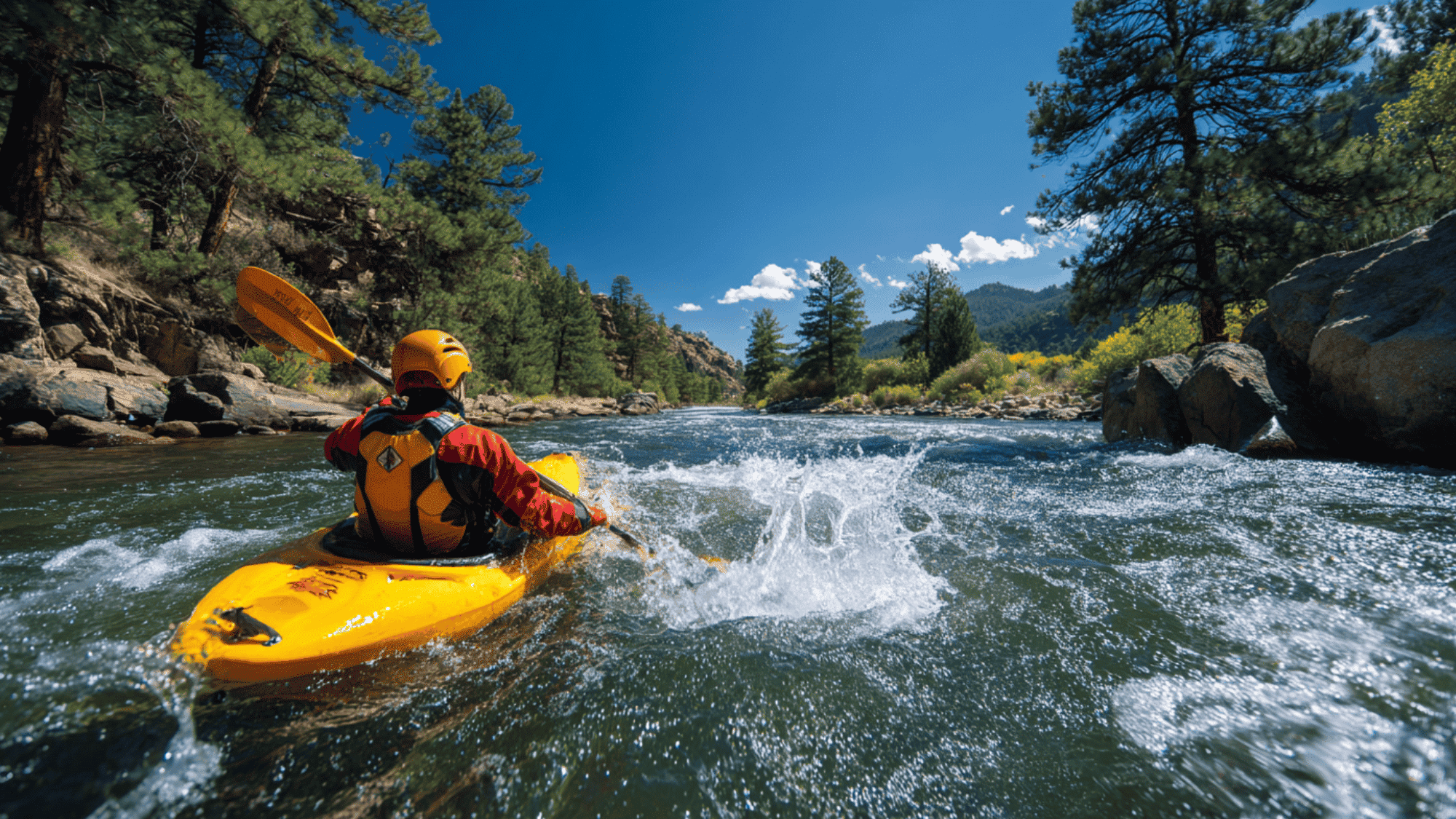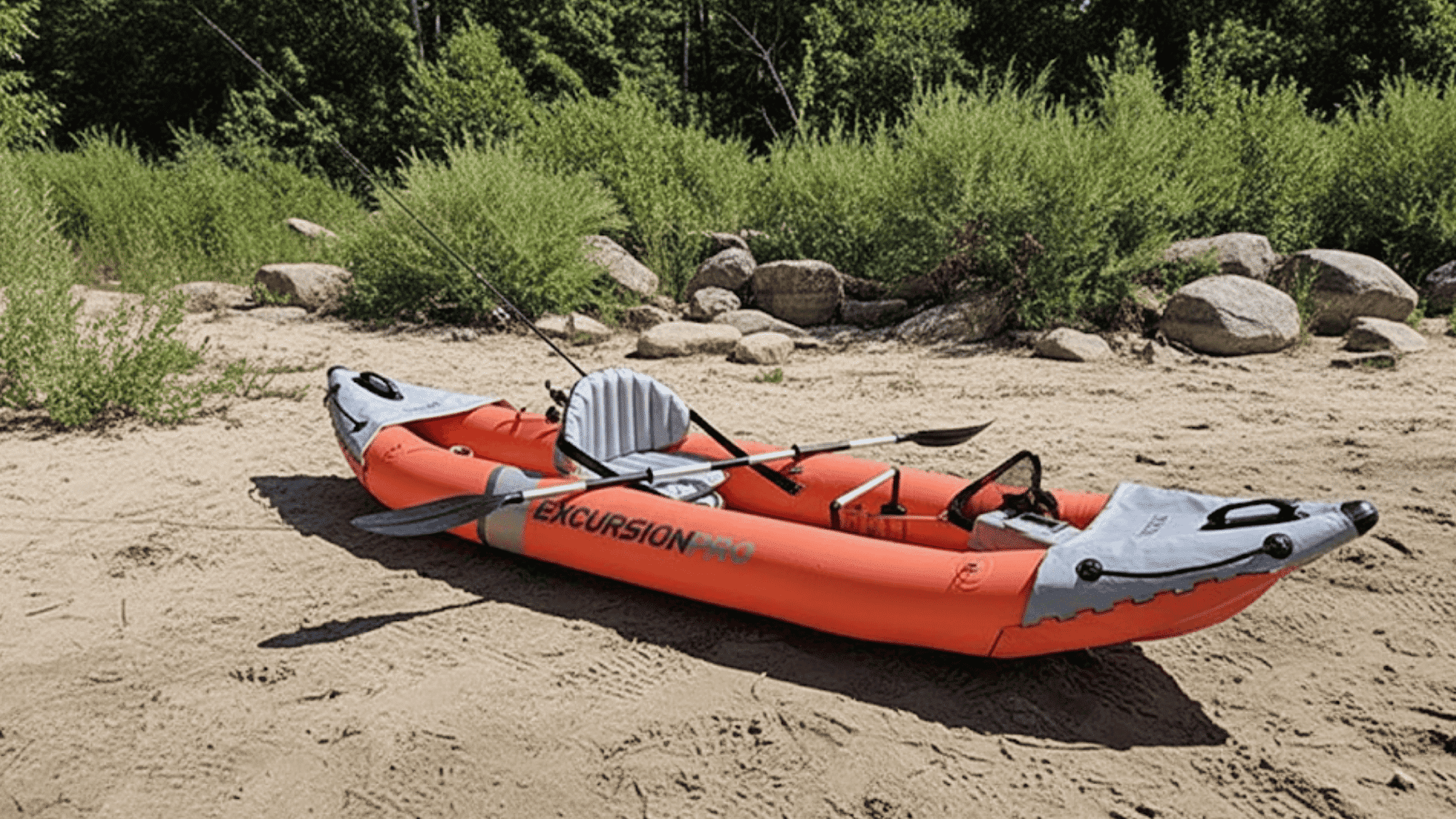Picture yourself gliding silently across a mirror-like lake at sunrise, your paddle cutting through the water with barely a sound.
The stress of daily life fades away as you become part of the natural world around you.
Kayaking offers one of the most accessible pathways into outdoor adventure, welcoming everyone from complete novices to families seeking new experiences together.
This comprehensive guide will equip you with everything needed to start your paddling journey safely and confidently, covering essential basics, proper techniques, gear selection, and safety protocols.
Why Start Kayaking?
Kayaking delivers remarkable benefits that extend far beyond simple recreation.
The rhythmic paddling motion provides excellent cardiovascular exercise while strengthening your core, arms, and shoulders without high-impact stress on joints.
The sport opens access to hidden corners of the natural world that remain unreachable by foot or larger watercraft.
Quiet coves, wildlife viewing opportunities, and secluded beaches become part of your regular paddling destinations.
For beginners, kayaking offers forgiving water types and kayak styles that build confidence gradually. Calm lakes, protected bays, and slow-moving rivers provide ideal learning environments where you can develop skills without intimidating conditions.
Is Kayaking Hard? What Beginners Need to Know
Kayaking is not hard to learn, but like any outdoor activity, it requires proper preparation and realistic expectations.
Most people can master basic kayaking skills within their first outing, though advanced techniques take time and practice.
The sport accommodates various fitness levels, from light recreational paddling that feels like a gentle walk to intense workouts that challenge athletes.
Children as young as 6-8 can paddle tandem kayaks with adults, while many people continue kayaking into their 70s and beyond.
While you should be comfortable in water, you don’t need to be a strong swimmer when using proper safety gear and staying close to shore initially.
Choosing Your First Kayak: Kayak for Beginners Guide
The kayak you choose determines how enjoyable and safe your experience will be. Understand the different types and decide on the suitability.
| Kayak Type | Best For | Pros | Cons | Avg. Cost (USD) |
|---|---|---|---|---|
| Recreational | Calm lakes, slow rivers | Wide, stable, easy to use | Less speed, less suited for rough water | $300–700 |
| Sit-on-Top | Warm climates, fishing, and easy re-entry | Open deck, stable, beginner-friendly | You’ll get wetter, with less weather protection | $300–800 |
| Inflatable | Apartments, travelers | Compact, portable, affordable | Slower, less durable long-term | $250–600 |
| Sit-In | Cooler climates, longer trips | Weather protection, more control | Feels enclosed for some | $400–900 |
Tips for picking your kayak:
- Choose stability over speed as a beginner.
- Match kayak length to your needs: shorter = easier to maneuver, longer = faster.
- Consider storage & transport (roof racks vs inflatables).
Essential Kayaking Gear for Beginners
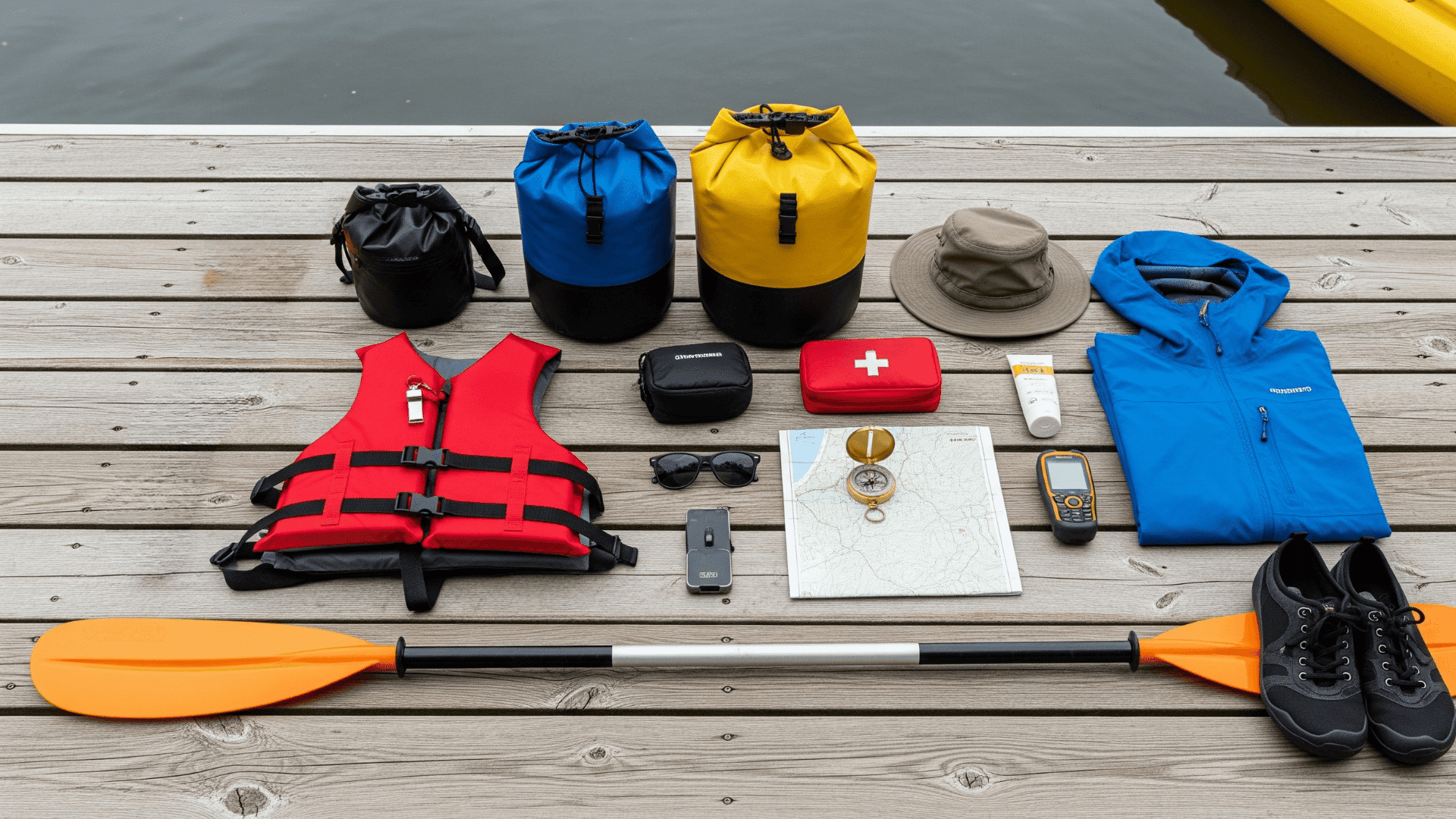
Having the right equipment ensures both safety and enjoyment on the water, while poor gear choices can turn a great day into a miserable experience.
- Paddle (Primary and Spare) – Choose a length of 220-250cm based on your height and kayak width, with lightweight materials like fiberglass reducing fatigue during extended trips.
- Personal Flotation Device (PFD) – A Coast Guard-approved, kayak-specific PFD is legally required in most areas and essential regardless of swimming ability or water conditions.
- Weather-Appropriate Clothing – Dress for water temperature rather than air temperature, as unexpected immersion poses the greatest hypothermia risk to paddlers.
- Sun Protection Gear – Wide-brimmed hat, UV-rated clothing, and waterproof sunscreen protect against painful burns and long-term skin damage from intense water reflection.
- Dry Bags (Multiple Sizes) – Waterproof storage protects electronics, spare clothes, food, and other items that must stay dry during your trip.
- Safety Whistle – Three sharp blasts provide emergency signaling capability that carries much farther than shouting across open water.
- First Aid Kit – Compact, waterproof first aid supplies handle minor cuts, scrapes, and injuries that commonly occur during outdoor activities. Include basics like bandages, antiseptics, pain relievers, and any personal medications you might need.
- Navigation Tools – A Waterproof map, compass, or GPS device helps you stay oriented and find your way back to launch points.
Starting Kayaking: Basic Stroking Techniques
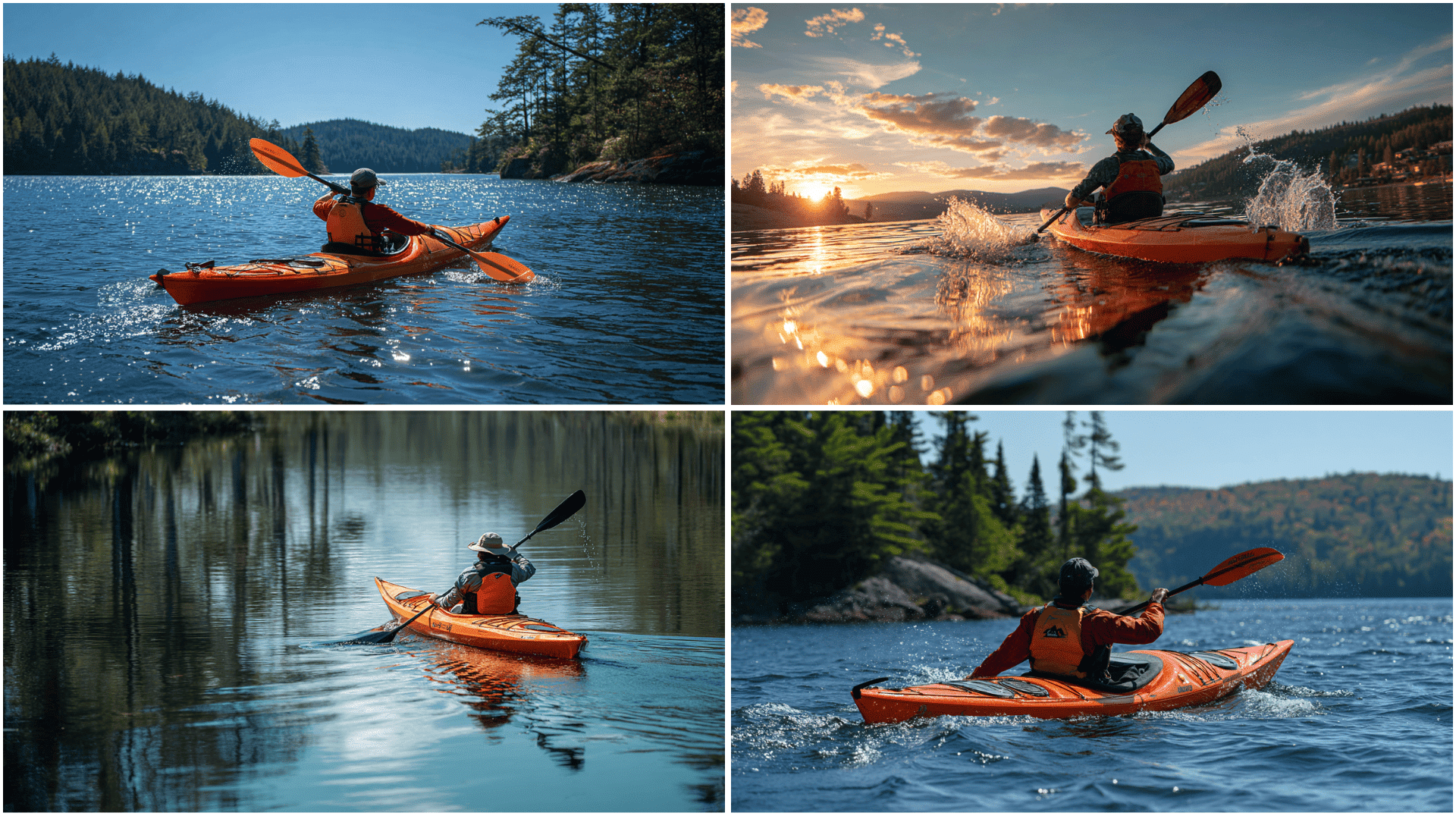
Mastering fundamental paddle strokes builds confidence and control while preventing fatigue and injury.
Focus on proper technique rather than power, as efficient strokes require less energy and provide better results.
1. Forward Stroke
Place your paddle blade fully in the water near your feet, keeping the shaft as vertical as possible. Rotate your torso to pull the blade through the water alongside your kayak, finishing the stroke near your hip.
The power comes from torso rotation, not just arm movement. Focus on smooth, consistent strokes rather than powerful but irregular ones that cause the kayak to zigzag.
2. Sweep Stroke
Start with your paddle blade near the bow and sweep it in a wide arc toward the stern while keeping the blade in the water throughout the motion.
This technique turns your kayak efficiently without losing forward momentum. Practice sweep strokes on both sides to turn in either direction.
A forward sweep stroke turns you away from your paddle side, while a reverse sweep turns you toward your paddle side.
3. Reverse and Draw Strokes
Use short, controlled reverse strokes near your hip to slow down or back up. Avoid long reverse strokes, which can cause loss of control and put strain on your back.
For sideways movement without turning, use draw strokes by placing your paddle blade perpendicular to your kayak and pulling it directly toward you.
This moves your kayak sideways, useful for approaching docks or moving away from obstacles while maintaining your heading.
5. Brace Stroke
Slap the back of your paddle blade flat on the water surface while leaning slightly into the stroke. This prevents capsizing when you feel unstable and builds confidence in challenging conditions.
Practice low braces in shallow, safe water before needing them in real situations. A proper brace can save you from an unwanted swim.
Getting In, Out, and Launching Your Kayak
Understanding safe entry, exit, and launching techniques prevents capsizing and builds confidence for every paddling adventure.
These fundamental skills become second nature with practice but require attention to proper form and timing when you’re starting out.
Launching Techniques
1. From shore:Wade into knee-deep water while holding your kayak parallel to shore. Keep the kayak floating while you climb in quickly but smoothly, maintaining your weight centered over the cockpit.
Push off with your paddle once you’re seated and properly positioned. Choose areas with gradual entries rather than steep drop-offs.
2. From the dock:Position your kayak alongside the dock with the cockpit next to the edge. Sit on the dock with both feet in the kayak, then lower yourself into the seat while keeping your weight centered.
Use your hands on the dock for stability during the transition. Push away from the dock once you’re settled and ready.
Safe Entry and Exit Methods
For sit-in kayaks, maintain three points of contact while entering – typically two hands and one foot, then transition smoothly to the seated position.
Keep your center of gravity low and move deliberately rather than rushing.
Sit-on-top kayaks allow stepping directly onto the seat area, but maintain balance throughout the process by keeping movements smooth and controlled.
Exit in shallow water whenever possible, using your paddle as an outrigger for additional stability. Place the paddle across the kayak behind the cockpit and use it for support while climbing out.
How to Start Kayaking without Buying Equipment?
Local outfitters provide quality equipment and often include basic instruction with rentals, allowing you to try different kayak styles and brands before committing to a purchase.
Rental staff can recommend appropriate kayaks based on your experience level and intended use. Many rental locations offer delivery services to put-in points, eliminating transportation concerns.
Professional guided tours combine instruction with exploration, teaching proper techniques while ensuring safety in appropriate conditions.
Guides provide local knowledge about water conditions, wildlife viewing opportunities, and interesting destinations you might miss on your own.
Tours often include all necessary equipment and provide structured learning environments perfect for building fundamental skills.
Common Mistakes Beginners Should Avoid
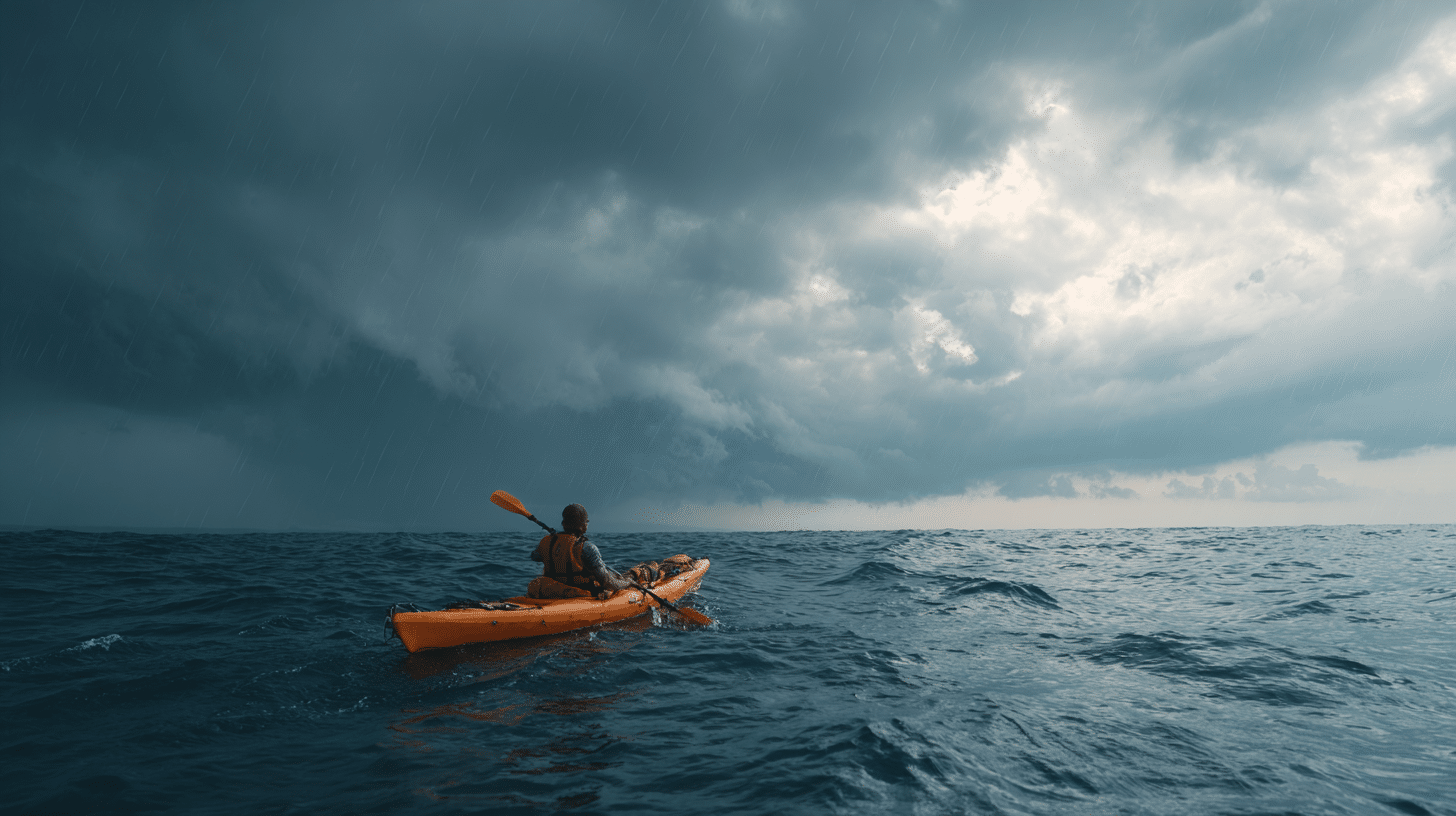
These frequent beginner mistakes can turn enjoyable outings into dangerous or unpleasant situations that might discourage you from continuing.
- Overestimating Your Abilities – Start with calm conditions close to shore and gradually build skills before tackling challenging water. Many beginners attempt too much too soon, creating dangerous situations.
- Ignoring Weather and Water Conditions – Always check forecasts, water temperature, and local conditions before launching. What seems manageable from shore may prove challenging once you’re committed on the water.
- Skipping Essential Safety Gear – Never compromise on your PFD or other critical safety equipment, regardless of swimming ability. Even experienced swimmers struggle in cold water, rough conditions, or when injured.
- Poor Trip Planning and Communication – Inform others of your paddling plans including route, expected return time, and emergency contacts. Many rescue situations result from people not knowing where to look for missing paddlers.
- Inadequate Preparation for Conditions – Carry water, snacks, first aid supplies, and emergency gear even for short outings. Plan escape routes and bail-out points in case conditions deteriorate or you become fatigued.
Safety Considerations for Beginners
Proper safety practices transform kayaking from a risky activity into an enjoyable, manageable outdoor pursuit.
| Safety Area | Key Practices | Why It Matters |
|---|---|---|
| Pre-Trip Planning | Check the weather, inform others of plans, and study route conditions | Prevents getting caught in dangerous conditions |
| Equipment Checks | Inspect kayak, test safety gear, ensure PFD fits properly | Equipment failures can create life-threatening situations |
| Water Awareness | Monitor changing conditions, stay close to shore initially | Conditions change faster than most beginners expect |
| Emergency Preparedness | Carry signaling devices, a first aid kit, and emergency contacts | Quick response can prevent minor issues from becoming major emergencies |
| Skill Development | Practice in safe conditions, take lessons, paddle with experienced partners | Proper technique prevents accidents and builds confidence |
Note: The most important safety rule for beginners is to always wear your PFD and never paddle alone until you’ve gained substantial experience and rescue skills.
Conclusion and Next Steps
The key to a successful beginning lies in starting gradually with proper equipment, focusing on safety fundamentals, and building skills systematically rather than rushing into challenging conditions that can create negative experiences.
Your first paddle strokes may feel awkward, but persistence and practice will soon have you gliding confidently across the water with smooth, efficient technique.
Take action today by researching local rental options, connecting with area paddling groups, or signing up for a beginner class.
Ready to start your kayaking journey? Share your questions or early experiences in the comments below – experienced paddlers love helping newcomers get started safely and successfully!





